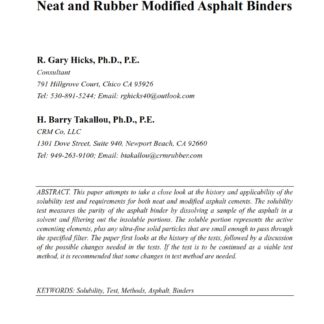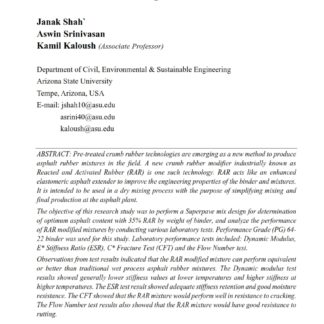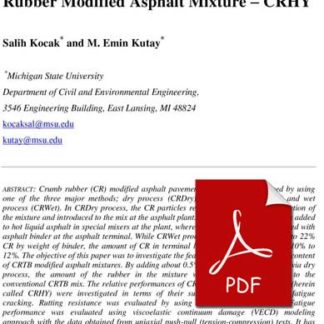Description
Crumb rubber (CR) modified asphalt pavements are typically produced by using one of the three major methods; dry process (CRDry), terminal blend (CRTB) and wet process (CRWet). In CRDry process, the CR particles replace the fine aggregate portion of the mixture and introduced to the mix at the asphalt plant. In CRWet process, the CR is added to hot liquid asphalt in special mixers at the plant, whereas in CRTB, the CR is blended with asphalt binder at the asphalt terminal. While CRWet process can accommodate 15% to 22% CR by weight of binder, the amount of CR in terminal blend typically ranges from 10% to 12%. The objective of this paper was to investigate the feasibility of increasing the CR content of CRTB modified asphalt mixtures. By adding about 0.5% CR (by weight of the mix) via dry process, the amount of the rubber in the mixture was doubled as compared to the conventional CRTB mix. The relative performances of CRTB and CRTB+dry process (herein called CRHY) were investigated in terms of their susceptibility to rutting and fatigue cracking. Rutting resistance was evaluated by using flow number (FN) tests. Fatigue performance was evaluated using viscoelastic continuum damage (VECD) modeling approach with the data obtained from uniaxial push-pull (tension-compression) tests. It has been shown that it is possible to increase the amount of CR in the mixture by using the CRHY method proposed herein, without adversely affecting the performance of the mixture..







